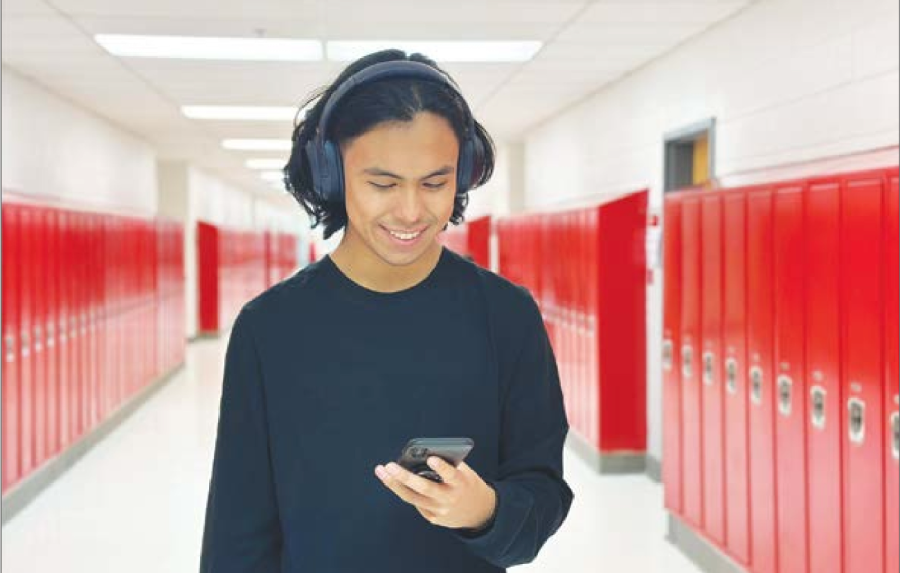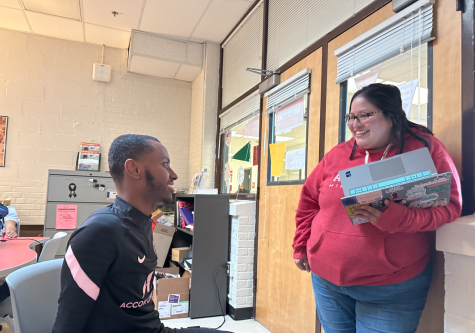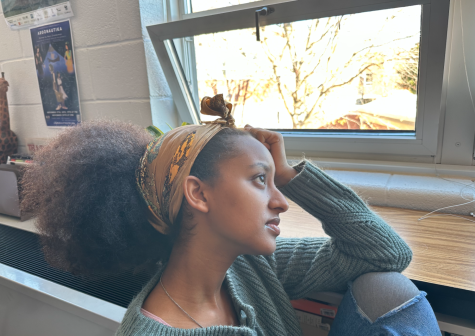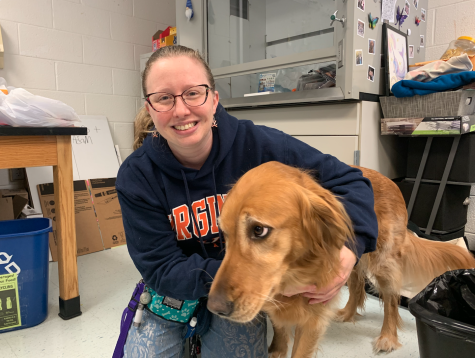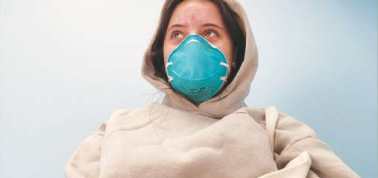How headphone usage is detrimental to students
Headphones have the ability to take many different dimensions. However, it can get to a point of no return where noise-canceling gadgets can harm our bodies.
A new study by BMJ Global Health has proved that more than 1 billion young people are at risk of hearing loss.
An estimation was released that 0.67- 1.35 billion children and young adults are at risk of hearing loss due to unsafe listening practices. The recommended decibels to listen to music at limits of 85 through the duration of a 40-hour week.
Many students use their headphones throughout the school day. Whether it’s during classwork time or walking in the halls, students are regularly seen with headphones like AirPods or beat on.
“When I’m completing my school work or doing chores, I like to listen to music with my AirPods. I normally listen to it at a pretty high volume because it is nice to be able to listen to my favorite songs when completing tasks,” said senior Ruftana Beyene
Many people of the younger generation tend to listen to music through their cellphones at a decibel level of 105.
Having unhealthy noise exposure from a young age can have long-lasting effects over one’s life course, making the damages more extreme.
The basis of the hearing loss all depends on the volume of the music and the duration that it is being listened to. To test if you have been listening for too long or too loudly is tinnitus or ringing ears.
Some ways to prevent hearing loss are taking a break from loud sound exposure, using ear protection in loud areas, and keeping your devices at a safe volume.
When out in public, it is recommended to distance yourself from loudspeakers/ noises to decrease the risk of long-term effects.
Many audiologists call this “call-induced hearing loss” because, over a long period of time, the sound from the headphones causes the hair cells in the cochlea to bend down too much or at a severe level.
“I don’t normally listen to music that often with my headphones. If I am listening to music, the volume is pretty moderate as I like to be aware of my surroundings at all times,” said senior Litzy Rivas
This is because when sound waves get to our ears, the eardrums vibrate and the vibrations are transmitted to the inner ear through small bones. Once the sound gets to the cochlea. The fluid-filled area is where the hair cells are that greatly impacts our listening ability.
If the damage does occur, your ears may never completely heal however that does not mean you’ll never have good hearing again.
“I blast my music with headphones everywhere I go. It takes me to a different reality where I can be productive and simultaneously listen to my favorite artists,” said senior Sarah Bakhtiar
Receiving a hearing aid from a radiologist will be able to restore hearing loss and strengthen the ability.
Generally, there is a 60-60 rule that audiologists recommend following. This means you should be listening at no more than 60% volume for no longer than 60 minutes.
If there is no recovery time taken, the damages can be permanent.
If the music is over 120 decibels, scientists have concluded that is the equivalence to attending a rock concert. If music is being listened to at that rate, hearing loss can happen after an hour and fifteen minutes.
Generally, older style headphones rest over your earth’s weather than going directly in are recommended for the safest listening practices.
Overall the best way to go about preventing hearing loss/ damage is by avoiding excessive listening.

Senior Sereene Darwiesh has been on The A-Blast since freshman year. She spends her time reading and hanging out with friends, her hobbies consist of baking...



